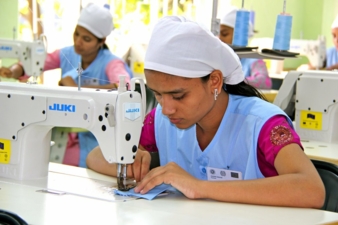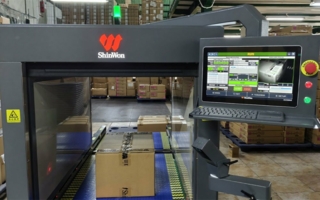26/07/2017 – Bremer Baumwollbörse e.V. — auf Deutsch lesen
Bangladesh: increasing garment production - increasing cotton imports
Similar to Vietnam also Bangladesh is almost entirely dependent on raw cotton imports.
MY 2016/17 imports are revised to 6 million bales on anticipated stronger international demand. Gradual development of the upstream supply chain, including spinning, dyeing, finishing, weaving and printing creates more demand for cotton to meet required supply to the RMG industry.
MY 2017/18 imports are projected to rise to 6.2 million bales on expectations of increased RMG exports as described above.
Bangladesh currently has 424 spinning mills, 794 textile weaving mills, 241 dyeing and finishing mills, and a total of over 6,500 registered and over 500 un-registered garment and textile factories. Sixty-five percent of these factories are located in Dhaka district. A total of over 4,300 Bangladesh Garment Manufacturers and Exporters Association (BGMEA) members employ some four million workers, of which about 80 percent are women.
Nearly 80 percent of garments made in Bangladesh are sourced from cotton; the rest are made from viscose, polyester and other materials.
As of February 2017 RMG export earnings were approximately $18.6 billion in FY 2016/17, up almost three percent from last year.
MY 2016/17 raw cotton consumption is revised to 6.2 million bales on expectations of higher demand for export-oriented end products. MY 2016/17 yarn and fabric consumption are unchanged at 1.02 MMT tons and 7.3 billion meters. MY 2017/18 raw cotton consumption is projected to increase to 6.3 million bales
Since China is moving toward high-tech industries and away from RMG, international buyers are seeking other suppliers, which offer opportunities for Bangladesh to increase apparel exports. In fact, media news reported that Bangladesh has identified 11 emerging countries as new potential markets for one billion USD worth of garments. Exports to non-traditional or developing markets are reportedly part of a larger strategy to reach an export target of $50 billion by 2021.
Hurdles to cross enroute include are: ensuring occupational safety and regulatory compliance; establishing and protecting labor rights; unreliable gas and electricity supply; inefficient port services and transportation; changing market demand; currency devaluation; reliance on foreign expertise; and international political shifts. In addition, production cost has risen by 17 percent over the past two years even as world market prices for apparel become more competitive.
Nevertheless, Bangladesh has a sizable value chain from which to squeeze efficiencies: in FY 2015-16 Bangladesh manufacturers’ percentage of value added to exports reached above 75%.
Source: USDA/FAS April 2017




